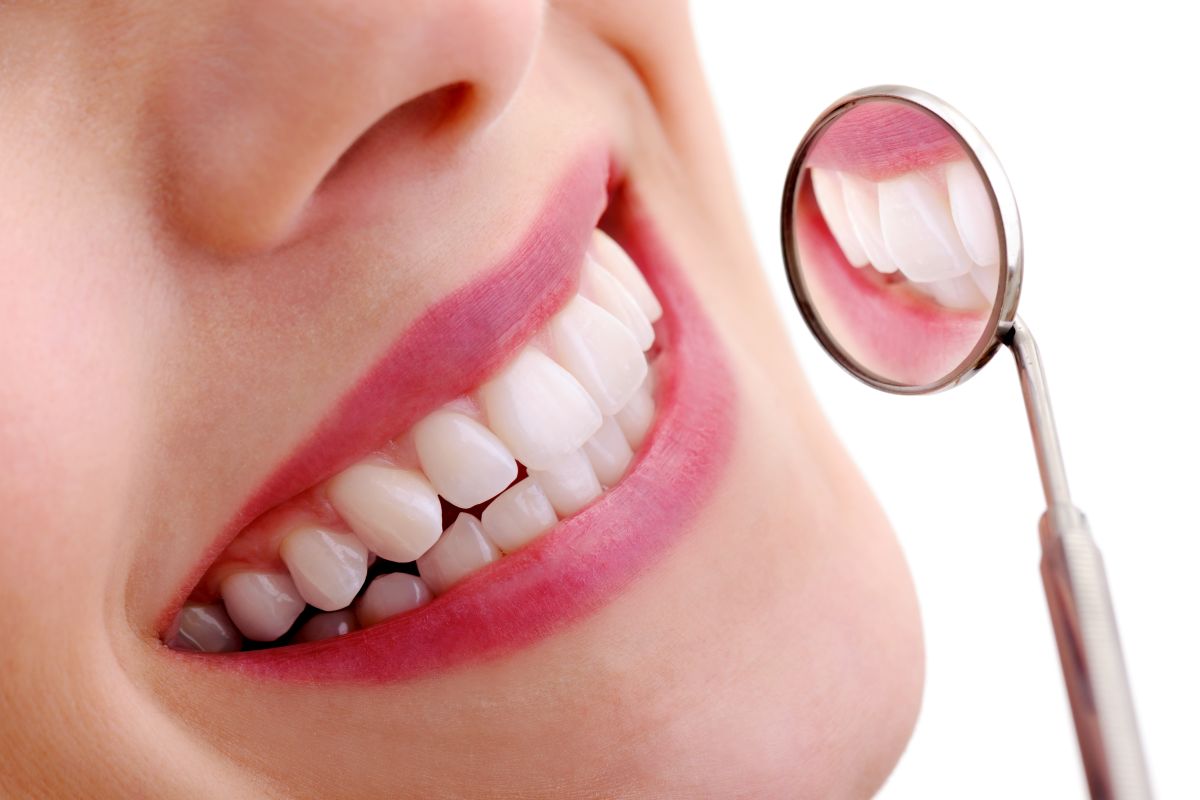However, oral health is much more than just gum disease. Studies have shown that there is a link between the health of one’s mouth and overall health. Experts believe that oral health issues as a health problem that can be attributed to a Trusted Source.
If not treated dental decay or gum issues can cause pain, issues in self-esteem, and even tooth loss. These issues can cause issues with speech, malnutrition as well as other issues that a person may face in their job, school or in their personal.
The best way to prevent this from happening is with regular dental treatment, at home, as well as in the dental office. Below are some of the most effective ways to maintain the health of gums and teeth.
Brush frequently, but not overly
Many people know that brushing your teeth twice every day is among the most effective methods to get rid of plaque and bacterial and keeping your teeth clean. But, it is possible for brushing to be effective if the person uses the right technique.
The best way to brush is with tiny circular movements, ensuring that they take particular care to brush the back, front, and the top of each tooth. This procedure takes between 2 to 3 minutes. The best way to avoid this is to use back-and forth motions.
Too hard of a brush or a toothbrush with a hard bristle can cause damage to gums and tooth enamel. The consequences of this could include tooth sensitivity, harm to enamel of the teeth and gum erosion.
Utilize fluoride
Fluoride is an element found in earth’s soil, called fluorine. Numerous professionals believe that the fluoride can help to prevent cavities and is an ingredient that is commonly found in mouthwash and toothpaste.
But some products for dental use don’t contain fluoride and some individuals do not even use the substance at all.
The evidence suggests that a deficiency of fluoride could cause tooth decay even if the person is taking proper care of their teeth. A recent study has discovered that flossing and brushing are not enough to stop Trusted Source a person from having cavities in the absence of fluoride.
Many communities across the United States have added fluoride to their water sources. Numerous organizations have recommended this practice. Trusted Source, such as the World Health Organization as well as the Centers for Disease Control and Prevention and the ADA.
You can determine whether the water they drink is fluoride-free by contacting the local government. Reverse Osmosis water filters get rid of fluoride. People who drink well water be required to examine the levels of fluoride in this water to determine the amount present. A lot of bottles of water don’t contain fluoride.
You should floss once a day
Flossing is a great way to remove plaque and bacteria that have built up between your teeth, which the toothbrush cannot reach. It also can help to keep bad breath at bay by eliminating food particles and other debris that have got stuck in between teeth.
Even though there’s no evidence of studies over time that show flossing your teeth is beneficial however, the adenosine deaminase continues to endorse flossing. According to the CDC Trusted Source also state that it is recommended to floss your teeth.
The majority of dental professionals suggest gentle pushing the floss down to the gumline, before embracing the tooth’s side by alternating up and down motions. It is essential to stay clear of snapping floss up and down between teeth, as this could cause pain and not eliminate plaque as efficiently.
See a dentist regularly
Experts suggest that patients see an appointment with a dentist every six months to check-up. When undergoing a regular dental examination the hygienist cleans the teeth, removing tartar that has become hardened and plaque.
The dentist will be looking for any visible signs of gum disease, dental cavities oral cancer, as well as other dental health issues. They might also employ dental X-rays in order to look for cavities.
The results of a new study showed that adolescents and children must visit a dentist each six months to prevent cavities. However, adults who maintain daily good oral hygiene and have a low chance of developing oral health issues may be able to visit less often.
Authors of the recent study by Trusted Source state that there is a need to conduct more quality studies to prove the optimal frequency of dental exams.
Patients can talk to their dentist regarding the frequency they should have a checkup. The answer will vary based on the person’s medical history as well as age and general dental health. But, anyone who is noticing changes to their mouth needs to see the dentist.
Do not smoke
Smoking can damage the body’s immune system making it more hard for your body to repair tissue such as those found in the mouth. The CDC declares smoking to be the leading cause of gum disease as a Trusted Source and the ADA caution that those who smoke can have slow healing after the procedure.
Smoking can affect the appearance of your mouth, which can cause discoloration of teeth and tongue. Additionally, smoking may give breath a bad smell.
Think about the possibility of using a mouthwash
A few studies have shown that certain mouthwashes are beneficial to oral health. For instance, a review found that mouthwash with chlorhexidine which is an antibacterial component can help combat gingivitis and plaque. Mouthwashes containing essential oils also work according to the meta-analysis.
Some people might want to consult their dentist about which is the most appropriate mouthwash for their specific requirements. The mouthwash isn’t a substitute for flossing or brushing, but it could complement these practices.
Mouthwashes to help poor breath as well as dental issues are available on the internet.
Beware of sugary and starchy foods
Sugar intake can result in cavities. Research continues to show the important role sugar plays in affecting dental health effects. The most frequent culprits are candy and desserts, however most processed foods contain sugar added to them.
The WHO suggests that people reduce the amount of sugar they consume to a minimum of 10 percent of the calories they consume daily. The researchers of a systematic review found that reducing this amount to 5 percent could lower the risk of developing cavities Trusted Source and other dental issues.
Experts have also suggested that foods with starch like crackers chips, bread and pasta, could lead to tooth decay. They ADA clarify that the food items stay in the mouth and are broken into simple sugars in which bacteria that produce acid feed. Acid can lead to tooth decay.
Instead of starchy foods the ADA advise eating lots of fibrous fruits and vegetables along with dairy products that do not contain added sugar.
Make sure to drink water in lieu of drinks with sugar
Sugar-sweetened drinks are the number the most common source for added sugars. They are a Trusted source in the daily diet of people in the U.S. Drinking soda, juice or other drinks that contain sugar can increase the chance of getting cavities.
The ADA suggests drinking tea, water or unsweetened throughout the day, and limit consumption of sugar-sweetened beverages to mealtimes and in smaller quantities.
Tips for children
Primary teeth for children that are often referred to as babies teeth, can be as crucial as permanent teeth. Baby teeth aid children in learning to talk and chew. They serve as placeholders for later permanent teeth.
If an infant loses a newborn tooth due to decay, it can cause problems in the mouth, making an obstacle for a tooth that is older to grow in a proper way.
This is why it is crucial to start introducing the best dental care to young children in the first year of their lives. These practices can aid in keeping a child’s dental and gums in good health:
- Baby’s gums should be cleaned with warm, moist washcloth each day regardless of whether they have any teeth. This removes sugars from the gums. This can help the baby get comfortable with brushing their teeth.
- Children and babies should not go to the bed with sippy cups. Juice and milk contain sugars that could cause tooth decay if they are left in the mouth for prolonged durations.
- As your baby reaches one year of age Begin to introduce them to drinking from a sippy cup. Try to get rid of bottles by the time they turn one.
- Allow toddlers to drink drinks from sippy cup bottles during meals, but keep the milk or juice to drink during mealtimes only.
- When a baby is born with teeth regularly, clean them twice per every day using a baby toothbrush that is soft. Apply a tiny amount fluoride toothpaste that is no larger than one grains of rice. Children between 3 and six years old can make use of a small amount of toothpaste.
- Parents or caregivers should clean the child’s teeth until they are able brush their teeth without assistance. Make sure that they don’t spit out the toothpaste.
Summary
A good routine of dental hygiene from childhood to adulthood will ensure that a person keeps their gums and teeth healthy. Cleaning and flossing regularly and not smoking, following healthy food and getting regular dental exams can help patients avoid gum disease, dental cavities as well as other dental issues. It can also help the overall wellbeing of patients.








